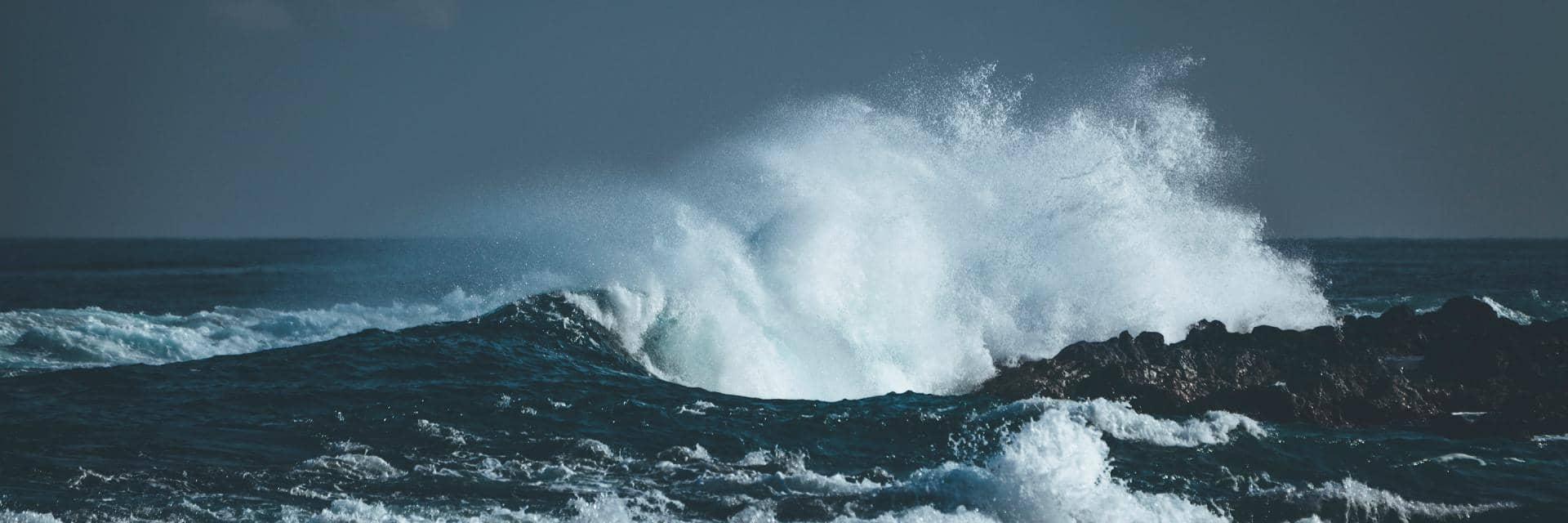
A partnership to protect the ocean
The ocean supports the health and resilience of the climate and all life on earth.
We will work in partnership with the Blue Marine Foundation (BLUE) to help them deliver their goal of ensuring that at least 30% of the global ocean is effectively protected and the other 70% sustainably managed by 2030.
BLUE is dedicated to creating marine reserves, restoring vital habitats and establishing models of sustainable fishing. We share their vision of a healthy ocean forever, for everyone.
Through a three-year, five million pound partnership, Barclays will work with BLUE to advance conservation of the world’s ocean.
The power of the ocean
Over half of the planet’s oxygen comes from the ocean[1], and it is the largest carbon sink on Earth; it has absorbed approximately 40% of carbon dioxide emissions since the beginning of the industrial era[2].
Marine habitats, such as mangroves, salt marshes and seagrasses, have an incredible ability to store carbon. Seagrass can bury organic carbon into the seabed 35 times faster than tropical rainforests[3].
It is estimated that ocean-based actions have the potential to close the ‘emissions gap’ by 21%, to limit temperature rise to 1.5oC by 2050[1]. The ocean also keeps the Earth cool, helping to slow the rate of climate change, having absorbed over 90% of excess heat from anthropogenic global warming since 1970[1]
Over three billion people rely on wild-caught and farmed seafood as their primary source of protein[4] and over 4.3 billion people are reliant on fish for 15% of their animal protein intake, while around 10% of the world’s population depends on fisheries as a livelihood[5].
The ability of the ocean to perform these services is being compromised by warming, acidification, pollution and, compounding these other threats, overfishing. Over 93% of fisheries are either fully or overexploited[6} and estimates suggest that if we continue extraction at current rates, global fisheries will collapse by 2048[7]. If the rate of human impact on the ocean continues at its current rate, the loss of marine ecosystem health and services will cost the global economy $428 billion per annum by 2050[8].
Measures such as the creation of marine reserves can increase the resilience of the ocean. Fish numbers have been shown to be 670% greater within fully protected ocean sanctuaries than in unprotected areas, indicating far more resilient ecosystems[9].
Leading global scientific consensus is that we have just ten years to address the ocean crisis and restore ocean health for the benefit of the planet[10].
Taking action together
Barclays will work with BLUE on specific programmes to help the foundation protect, sustain and restore the ocean. These will include areas such as:
Protection
BLUE identifies, advocates for, designs and helps to implement effective marine protected areas (MPAs), to ensure the protection of important habitats and species in at least 30% of the ocean by 2030.
Through carefully selected and targeted projects around the world, BLUE will further strengthen the ‘Blue Belt’ of MPAs that will help to mitigate the impacts of climate change.
Sustainable Management
The management of the world’s ocean needs continued scrutiny and challenge to ensure that the best scientific advice is followed and effective measures taken to restore overfished stocks.
Among other solutions, BLUE is developing models of sustainable fishing in the other 70% of the ocean, proving that low-impact fishing benefits marine life, local fishers and communities.
In its flagship project in the UK’s Lyme Bay, BLUE has proved that strong conservation can provide benefits for nature and low-impact fishing. This is a model based on collaborative conservation, with measurable benefits for both the marine environment (the reserve has seen a 52% increase in biodiversity and has 4.5 times more juvenile lobsters) and small-scale fishers (who have recorded higher incomes and levels of job satisfaction).
Restoration
BLUE is working to restore marine habitats to revive and protect vulnerable and threatened species and to sequester carbon.
Some coastal ecosystems can sequester and store more carbon per unit area than forests on land and play a vital role in mitigating climate change. Within three years, and based on interrogation of the best available science, BLUE seeks to establish and reinforce five key restoration projects to mitigate the effects of climate change, and establish best practice, scalable, replicable templates.
[1] Special Report on the Ocean and Cryosphere in a Changing Climate. Intergovernmental Panel on Climate Change, 2019
[2] Recent increase in oceanic carbon uptake driven by weaker upper-ocean overturning. DeVries, Holzer and Primeau, 2017
[3] Losses and recovery of organic carbon from a seagrass ecosystem following disturbance. Macreadie, et al., 2015
[4] WWF. Sustainable Seafood. https://www.worldwildlife.org/industries/sustainable-seafood
[5] FAO. Oceans crucial for our climate, food and nutrition. (n.d.) http://www.fao.org/news/story/en/item/248479/icode/, 2014
[6] FAO, 2018
[7] Impacts of Biodiversity Loss on Ocean Ecosystem Services. Worm et al., 2006
[8] One Earth. Damanaki, 2020
[9] No-take marine reserves are the most effective protected areas in the ocean. Sala et al., 2017
[10] Eight urgent, fundamental and simultaneous steps needed to restore ocean health, and the consequences for humanity and the planet of inaction or delay. Laffoley et al., 2019